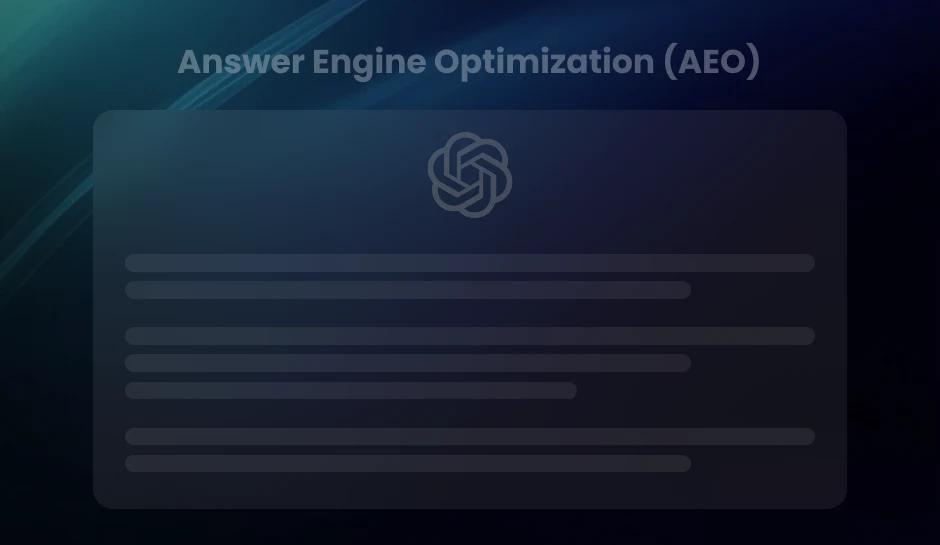
Predictive Analytics in Adobe Analytics: Leveraging Data for Smarter Decisions
Predictive analytics in Adobe Analytics empowers businesses to anticipate customer behavior and market trends, refining marketing strategies and improving decision-making with AI-powered insights. Learn how to optimize campaigns and conversion rates using advanced data forecasting.
Adobe Analytics transforms raw data into actionable insights, equipping businesses with a comprehensive understanding of customer behavior. As part of the Adobe Experience Cloud, it processes vast amounts of data in real-time, enabling marketers to refine strategies, personalize interactions, and optimize performance.
Modern marketing demands precision, and Adobe Analytics delivers by providing deep data analysis capabilities. It functions as an indispensable tool for businesses focused on customer experience and data-driven decision-making. Tracking user interactions, mapping customer journeys, and identifying trends all become seamless with its robust set of features.
Analytics and decision-making go hand in hand. Every digital interaction generates data, and without proper analysis, valuable opportunities remain hidden. Adobe Analytics not only reveals patterns but also predicts future behavior, allowing businesses to act proactively rather than reactively. This predictive capability shifts the focus from understanding past performance to anticipating what comes next, unlocking new levels of efficiency and personalization.
The Significance of Predictive Analytics in Modern Marketing
Definition of Predictive Analytics
Predictive analytics leverages statistical algorithms, machine learning techniques, and historical data to forecast future outcomes. This method quantifies probabilities, enabling businesses to anticipate customer behavior, market trends, and operational shifts before they happen.
Within marketing, predictive analytics refines strategies by analyzing user interactions, transaction histories, and engagement metrics. These insights help businesses tailor personalized experiences, optimize ad spend, and improve customer retention through data-driven decision-making.
Why Predictive Analytics Is Imperative for Effective Marketing
Marketing without predictive analytics relies on historical performance and intuition, leading to inefficiencies. Predictive analytics transforms raw data into actionable foresight, allowing brands to allocate resources with precision.
- Customer Lifetime Value (CLV) Predictions: Identifying high-value customers maximizes retention efforts and revenue growth.
- Churn Prevention: Predicting the likelihood of customer attrition enables proactive engagement and retention strategies.
- Campaign Performance Forecasting: Analyzing audience data helps optimize messaging and budget allocation for maximum impact.
- Dynamic Pricing Strategies: Demand forecasting enhances pricing models, ensuring competitive positioning without eroding margins.
- Personalized Content and Product Recommendations: Machine learning algorithms analyze browsing behavior to deliver tailored experiences.
Gaining Competitive Advantage Through Predictive Insights
Companies using predictive analytics outperform competitors by anticipating market shifts and aligning strategies accordingly. According to a McKinsey report, organizations that integrate advanced analytics into their decision-making processes increase marketing ROI by up to 20%.
Early identification of emerging trends prevents reactive decision-making, allowing businesses to lead rather than follow. By integrating predictive analytics into digital marketing operations, brands increase efficiency, minimize waste, and create highly targeted customer experiences that drive long-term loyalty.
Pro Tip- Leverage predictive analytics to identify high-value customers early, allowing you to proactively personalize experiences and optimize marketing efforts for maximum retention and growth.
Cutting-Edge Predictive Analytics Features within Adobe Analytics
Unpacking Adobe’s Predictive Analytics: From Customer Data Analysis to Machine Learning
Adobe Analytics integrates predictive analytics by combining robust data collection with advanced machine learning techniques. The platform processes large volumes of customer data, identifying trends and patterns that drive informed business decisions. By leveraging AI-driven models, it predicts user behaviors, automates insights and refines marketing strategies based on historical and real-time data.
At the core of Adobe’s predictive capabilities is Adobe Sensei, an AI and machine learning framework that enhances data interpretation. This system automates anomaly detection, forecasts customer actions, and delivers personalized recommendations. By continuously learning from user interactions, Adobe Sensei refines its predictions, making them more precise over time.
Adobe Analytics employs advanced statistical modeling techniques, including regression analysis, time-series forecasting, and propensity modeling. These methodologies allow brands to assess future engagement levels, predict purchase intent, and optimize website experiences accordingly. By applying machine learning algorithms, Adobe Analytics moves beyond descriptive metrics, enabling proactive decision-making rather than reactive adjustments.
A Snapshot of Adobe’s Predictive Tools and Features
- Predictive Audiences: Powered by machine learning, this feature segments users based on their likelihood to convert. Marketers can tailor campaigns for high-value prospects while re-engaging lower-propensity users differently.
- Anomaly Detection: The system continuously monitors data trends, flagging deviations from expected patterns. By promptly identifying unusual spikes or drops in engagement, businesses can address potential issues or seize emerging opportunities.
- Contribution Analysis: Adobe Analytics pinpoints key drivers behind performance changes. Whether investigating a decline in website traffic or an increase in sales, this feature isolates the most influential variables impacting results.
- Time-Series Forecasting: This tool analyzes historical trends to project future performance. Businesses can anticipate customer demand, allocate resources effectively, and align marketing efforts with projected growth.
- Automated Insights: AI-driven reports highlight significant data shifts without manual intervention. Marketers receive contextual explanations for changes in customer behavior, streamlining analysis, and action planning.
Adobe Analytics integrates these predictive tools seamlessly into dashboards, enabling marketers to visualize insights effectively. By bridging historical analysis with forward-looking predictions, businesses enhance customer engagement and operational efficiency through data-driven precision.
Pro Tip- Use Adobe Analytics’ Predictive Audiences to segment users by their likelihood to convert. This allows for more focused, data-driven marketing campaigns that prioritize high-value prospects and re-engage lower-propensity users with tailored approaches.
Seamless Data Management and Integration
Data Quality and Integration: The Foundation of Predictive Accuracy
Predictive analytics depends on accurate, well-integrated data. Incomplete, outdated, or siloed datasets introduce inconsistencies that weaken model reliability. Analysts need clean, structured, and unified data to generate actionable insights.
Adobe Analytics ensures data quality by supporting standardized collection methods and automated validation processes. Built-in governance tools help maintain consistency across datasets, preventing errors that can distort predictive models.
How Adobe Analytics Facilitates Robust Data Management
Managing vast amounts of data requires a system that can handle structured and unstructured formats while maintaining performance at scale. Adobe Analytics offers:
- Data Standardization: Unified data models ensure compatibility between different sources, avoiding inconsistencies that disrupt predictive accuracy.
- Automated Processing: Machine learning-driven anomaly detection cleans datasets, flagging irregularities before they affect analysis.
- Flexible Storage: Adobe’s Experience Platform allows storage and retrieval of historical and real-time data, optimizing predictive models with diverse datasets.
By automating data hygiene and providing structured storage, Adobe Analytics streamlines the foundation necessary for trustworthy predictive analytics.
Integrating Multiple Data Sources for a Holistic View
Enhanced predictive insights require data from multiple touchpoints. Adobe Analytics enables seamless integration with CRM platforms, third-party APIs, and offline sources, creating a comprehensive dataset.
Key integration capabilities include:
- Customer Journey Mapping: Combining website interactions, mobile application data, and offline sales enables a complete view of customer behavior.
- Cross-Platform Tracking: Unifying data between digital ads, email campaigns, and social media engagements refines predictive accuracy.
- Real-Time Data Feeds: Streaming data ingestion allows businesses to adjust predictions dynamically, responding to customer behavior as it evolves.
By integrating diverse sources, Adobe Analytics ensures predictive models reflect real-world behavior rather than isolated data points. This connectivity strengthens insights, driving more precise decision-making.
Pro Tip- Leverage Adobe Analytics’ real-time data feeds and cross-platform tracking to continuously refine predictive models. By integrating data from all customer touchpoints—website, mobile, CRM, and offline—you can create a comprehensive view of customer behavior, ensuring more accurate and actionable predictions.
Harnessing Predictive Modeling and Machine Learning
The Mechanics of Predictive Modeling
Predictive modeling in Adobe Analytics relies on statistical techniques and historical data to forecast future outcomes. These models use regression analysis, decision trees, and clustering algorithms to establish patterns and relationships within datasets. By analyzing past user interactions, businesses can anticipate future behaviors with a high degree of accuracy.
Adobe Analytics employs both supervised and unsupervised modeling techniques. Supervised models utilize labeled data sets to train algorithms, defining parameters based on past outcomes. Unsupervised models, on the other hand, identify hidden structures within unlabeled data, uncovering new customer segments or behavioral insights without predefined categories. These methodologies enable organizations to make data-backed predictions about user engagement, churn probability, and lifetime value.
The Role of Machine Learning in Driving Predictive Models
Machine learning enhances predictive modeling by automating pattern recognition and improving forecast precision over time. Adobe Analytics integrates machine learning algorithms that continuously refine their predictions based on newly ingested data. These models adapt dynamically, eliminating the need for manual recalibration while ensuring higher accuracy in trend forecasting.
Adobe Sensei, the AI framework within Adobe Analytics, leverages machine learning to power anomaly detection, automated insights, and advanced attribution modeling. By processing vast datasets in real-time, machine learning algorithms enhance segmentation, personalization, and campaign performance analysis without human intervention.
Practical Applications of Machine Learning within Adobe Analytics
- Customer Churn Prediction: Identifies users at risk of disengagement by analyzing behavioral trends and interaction patterns.
- Personalized Content Recommendations: Dynamically serves tailored experiences based on individual browsing history and engagement likelihood.
- Conversion Probability Scoring: Assigns predictive scores to visitors based on their likelihood to complete a desired action, optimizing retargeting strategies.
- Anomaly Detection: Flags unexpected data fluctuations, enabling faster response to potential performance issues or fraudulent activities.
- Cross-Channel Attribution: Uses machine learning-driven attribution models to determine the most impactful marketing touchpoints in a customer’s journey.
Customer Behavior Analysis: A Key to Predictive Success
Analyzing Past Customer Data to Predict Future Actions
Customer behavior leaves a trail of data points views, time spent, clicks, purchases, and drop-offs. Every interaction shapes a pattern. By analyzing historical behavior, Adobe Analytics identifies trends and correlates actions with specific outcomes. Past engagement with a product page, combined with cart abandonment frequency, signals a likelihood of purchasing under the right conditions. Recurring search queries and repeated content interactions highlight latent interests, enabling businesses to make informed predictions with confidence.
Adobe Analytics processes vast datasets to detect hidden relationships. Customers who frequently browse high-value items but delay purchases may respond to time-sensitive discounts, while those who engage with specific product categories exhibit a high probability of conversion when targeted with relevant recommendations. Every past action informs the next predicted step.
How Adobe Analytics Enables Detailed Customer Behavior Analysis
Adobe Analytics provides a rich set of tools for dissecting customer interactions at granular levels. Using advanced data visualization, behavior tracking, and segmentation tools, businesses can refine predictive accuracy.
- Flow Analysis: Tracks customer navigation paths to identify friction points and common drop-off stages.
- Cohort Analysis: Groups users based on shared behaviors or characteristics to understand long-term engagement trends.
- Attribution Models: Determines the impact of various touchpoints in driving conversions.
- Fallout Reporting: Analyzes where users abandon a process, revealing optimization opportunities.
- Propensity Scoring: Assigns probability scores to different user segments based on the predicted likelihood of conversion.
With AI-powered processing, Adobe Analytics refines behavioral insights continuously. Automated pattern recognition enhances prediction accuracy, ensuring businesses remain ahead of evolving customer preferences.
The Relevance of Behavioral Analysis in Predictive Models
Predictive models rely on behavior-driven algorithms to forecast user actions with precision. Analyzing browsing habits, purchasing timelines, and engagement frequency strengthens predictive scoring. Adobe Analytics integrates behavioral factors such as recency, frequency, and monetary (RFM) analysis into machine learning models. These models anticipate repeat purchases, churn likelihood, and upsell opportunities.
Behavioral data also refines content personalization. Users interacting extensively with video content benefit from predictive recommendations tailored to their preferred format. Visitors returning to specific pricing pages indicate high intent, prompting customized offers to accelerate conversion.
By linking past actions to future events, predictive analytics transforms raw interactions into strategic business intelligence. Adobe Analytics equips organizations to harness behavioral analysis, ensuring more effective engagement, optimized customer journeys, and stronger performance outcomes.
Pro Tip- Use Adobe Analytics’ Cohort Analysis and Propensity Scoring tools to segment your audience based on specific behaviors. This helps refine predictive models and create targeted, high-conversion strategies tailored to users’ past interactions, such as upsell opportunities or personalized recommendations.
Optimizing Conversion Rates with Predictive Analytics
The Connection Between Predictive Analytics and Conversion Rate Optimization (CRO)
Predictive analytics enhances conversion rate optimization (CRO) by forecasting user behavior based on historical data, real-time interactions, and machine learning models. It identifies which visitors are likely to convert and pinpoints friction points that hinder conversions. By leveraging these insights, businesses can implement data-driven interventions that increase the probability of desired actions.
Adobe Analytics integrates predictive capabilities to refine CRO strategies. It anticipates visitor intent, prioritizes high-value prospects, and prescribes adjustments in marketing campaigns, UI/UX design, and content strategy. With this approach, businesses move beyond reactive optimizations to proactive, results-driven actions.
How Adobe Analytics Helps Predict and Improve Conversion Likelihood
Adobe Analytics employs advanced predictive algorithms to assess conversion likelihood. These models analyze behavioral signals, segmentation data, and past conversions to score visitors based on their expected actions. Marketing teams can utilize this data in several ways:
- Predictive Scoring: Adobe Analytics assigns a conversion probability score to individual users, enabling businesses to focus on high-propensity leads.
- Real-time Personalization: By recognizing user intent, the platform dynamically modifies content, CTAs, or offers to align with predicted behaviors.
- AI-Driven Funnel Optimization: Machine learning models detect drop-off points in the conversion funnel, suggesting targeted optimizations.
- Attribution-Backed Insights: Predictive attribution modeling links marketing efforts to high-converting paths, helping refine budget allocation.
- Anomaly Detection for CRO: Adobe Analytics flags irregularities in conversion trends, allowing rapid intervention to sustain performance.
By integrating predictive analytics into CRO efforts, organizations maximize efficiency in driving conversions. Adobe Analytics delivers the intelligence needed to anticipate user actions, personalize experiences in real-time, and continuously refine marketing strategies to achieve measurable improvements in conversion rates.
Pro Tip- Leverage Predictive Scoring and AI-Driven Funnel Optimization in Adobe Analytics to prioritize high-conversion prospects and identify friction points in your conversion journey. This data-driven approach enables real-time personalization and proactive interventions, optimizing user experience and maximizing conversion rates.
Marketing Campaign Optimization through Predictive Analytics
Refining Marketing Strategies Based on Predictive Insights
Adobe Analytics uses predictive analytics to help marketers optimize campaign performance by leveraging statistical modeling and machine learning algorithms. By analyzing historical data, the system identifies patterns and predicts future outcomes, guiding teams to refine their marketing strategies. Campaigns become more efficient as predictive insights reveal which channels, messages, and customer segments yield the highest engagement and conversion rates.
The platform processes vast amounts of customer interaction data to assess variables such as timing, device preference, and content effectiveness. Marketers use these insights to allocate budgets strategically, ensuring optimal return on investment (ROI). Instead of relying on generic targeting, Adobe Analytics enables data-driven campaign adjustments, ensuring that each interaction maximizes engagement and drives desired actions.
Through predictive scoring models, businesses prioritize high-value leads and personalize messaging to match customer intent. The system continuously refines predictions as new data flows in, providing adaptive optimization recommendations that evolve with consumer behavior. By reducing guesswork, marketers avoid ineffective ad placements and improve cost efficiency.
Pro Tip- Use Predictive Scoring Models in Adobe Analytics to prioritize high-value leads and continuously refine your campaign strategies. By aligning messages with customer intent and adjusting in real-time, you’ll maximize ROI and ensure every marketing dollar is well spent.
Best Practices for Implementing Predictive Analytics in Adobe Analytics
Strategic Steps for a Predictive Analytics Setup in Adobe Analytics
Building an effective predictive analytics framework in Adobe Analytics requires a structured approach. Organizations that follow a clear roadmap achieve better accuracy and results from their data-driven strategies.
- Define Business Objectives Clearly: Identify specific goals such as increasing customer retention, improving personalization, or optimizing conversion rates. Align predictive analytics efforts with these objectives to ensure meaningful insights.
- Ensure High-Quality Data: Predictive models depend on clean, structured, and comprehensive data. Address inconsistencies, remove redundant information, and consolidate various data sources within Adobe Analytics.
- Leverage Adobe Sensei’s Machine Learning: Adobe Sensei enhances predictive capabilities by analyzing vast amounts of behavioral data. Use it to forecast trends, automate insights, and refine audience segmentation.
- Establish Key Metrics and KPIs: Define the performance indicators that will measure predictive model success. Regularly refine these metrics based on ongoing insights and business needs.
- Continuously Test and Train Models: Predictive models require regular testing to maintain accuracy. Retrain machine learning algorithms with updated datasets to improve effectiveness over time.
Tips for Seamless Integration and Adoption
- Integrate with Other Adobe Experience Cloud Solutions: Connect Adobe Analytics with Adobe Target, Adobe Campaign, and Customer Journey Analytics to maximize predictive insights across marketing efforts.
- Automate Data Workflows: Use Adobe Launch and automated tagging to streamline data collection and organization. Consistency in data handling improves model accuracy.
- Prioritize Cross-Department Collaboration: Predictive analytics is most effective when marketing, sales, and data science teams work together. Shared insights enhance decision-making across business units.
- Provide User Training and Support: Educating teams on Adobe Analytics’ predictive features improves adoption. Interactive workshops and hands-on training sessions accelerate learning.
- Monitor Implementation with Dashboards: Custom dashboards help track predictive model performance and pinpoint areas needing adjustments.
Pitfalls to Avoid in the Predictive Analytics Journey
Ignoring common challenges leads to inaccurate predictions and wasted resources. Avoid these pitfalls to maintain a robust predictive analytics setup in Adobe Analytics.
- Relying on Incomplete Data: Missing or inconsistent data skews predictions. Establish rigorous data validation processes before feeding datasets into predictive models.
- Overlooking Model Fine-Tuning: Predictive models degrade over time without proper updates. Regularly refine algorithms to adapt to dynamic customer behaviors.
- Focusing Too Much on Technical Complexity: Advanced machine learning techniques are valuable, but business usability matters just as much. Keep models interpretable and actionable for non-technical teams.
- Ignoring External Influences: Market conditions, seasonality, and economic factors impact customer behavior. Incorporate external data sources to enhance predictive accuracy.
- Neglecting Ethical Considerations: Bias in predictive models leads to misleading insights and potential compliance risks. Ensure transparency in data handling and model decision-making.
The Future of Predictive Analytics in Adobe Analytics
Predictive analytics in Adobe Analytics reshapes how businesses interpret data, anticipate customer behavior, and refine marketing strategies. Machine learning-driven insights fuel targeted decision-making, optimizing audience segmentation, personalization, and overall campaign effectiveness.
Organizations leveraging predictive capabilities within Adobe Analytics gain a competitive advantage by turning raw data into foresight-driven actions. Marketing teams equipped with these tools can predict customer trends, allocate budgets efficiently, and maximize return on investment through data-backed strategies.
Preparing for a predictive future demands a data-driven mindset, technical proficiency, and seamless collaboration between analysts, strategists, and decision-makers. Aligning teams with business objectives ensures predictive insights translate into measurable improvements in engagement, conversions, and brand loyalty.
Adobe Analytics continues evolving, enhancing predictive models and expanding automation capabilities. Businesses prioritizing advanced analytics will lead their industries, responding proactively to shifts in consumer behavior and market dynamics.
Key Takeaways
- Predictive analytics in Adobe Analytics enables businesses to anticipate customer behavior, trends, and market shifts, allowing for data-driven, proactive marketing strategies.
- By leveraging AI and machine learning, Adobe Analytics delivers personalized content, recommendations, and dynamic pricing based on predictive models, enhancing customer engagement and conversion rates.
- Predictive insights optimize campaign strategies, ad spend, and customer retention efforts by forecasting performance, ensuring resources are allocated effectively for maximum ROI.
- Adobe Analytics’ integration of machine learning models and real-time data processing ensures ongoing refinement of predictions, keeping strategies agile and responsive to evolving consumer behaviors.
Explore Adobe Analytics further to unlock predictive potential and refine marketing strategies with AI-driven intelligence.
Email us at info@diggrowth.com to find out how predictive analytics will influence your marketing approach.
Ready to get started?
Increase your marketing ROI by 30% with custom dashboards & reports that present a clear picture of marketing effectiveness
Start Free Trial
Experience Premium Marketing Analytics At Budget-Friendly Pricing.

Learn how you can accurately measure return on marketing investment.
Additional Resources
Don’t Let AI Break Your Brand: What Every CMO Should Know
AI isn’t just another marketing tool. It’s changing...
Read full post postFrom Demos to Deployment: Why MCP Is the Foundation of Agentic AI
A quiet revolution is unfolding in AI. And...
Read full post postAnswer Engine Optimization (AEO): The New Frontier of SEO in 2025
As digital experiences continue to evolve, so does...
Read full post postFAQ's
Predictive analytics in Adobe Analytics uses historical data, statistical algorithms, and machine learning models to forecast future outcomes. This capability helps businesses predict customer behavior, trends, and potential market shifts, enabling proactive decision-making rather than reactive adjustments.
Adobe Analytics integrates machine learning through Adobe Sensei, which processes vast datasets to identify patterns and anomalies. Machine learning algorithms continuously refine predictions based on new data, helping businesses forecast customer behavior, optimize campaigns, and improve conversion rates with real-time insights.
Predictive analytics in marketing can be used for various purposes, including predicting customer lifetime value (CLV), preventing churn, forecasting campaign performance, making personalized content recommendations, and developing dynamic pricing strategies. It helps marketers tailor strategies and resources to maximize engagement and drive higher ROI.
Predictive analytics enhances CRO by forecasting user behavior and identifying potential drop-off points in the conversion funnel. It assigns conversion probability scores to visitors, enabling businesses to prioritize high-value leads, personalize experiences, and take proactive steps to address barriers to conversion.
Key challenges include ensuring data quality (avoiding incomplete or inconsistent data), regularly fine-tuning predictive models to adapt to changing behaviors, integrating external data sources for accuracy, and avoiding overcomplexity in model interpretation. Businesses must also ensure ethical use of data to prevent biases in predictions.
 Shahzad Mussawir
Shahzad Mussawir  Arpit Srivastava
Arpit Srivastava 

